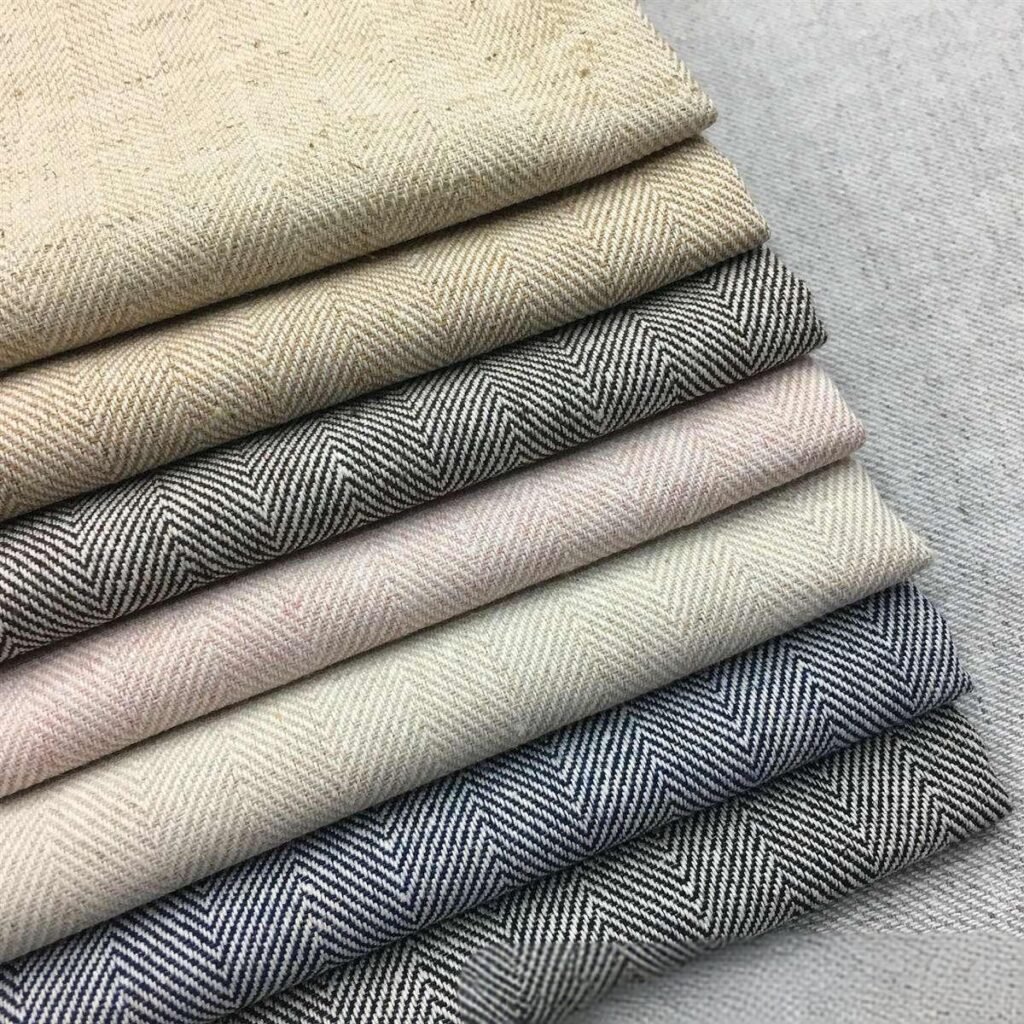
Imagine walking into a boutique showroom where every shirt on the rack feels as light as a breeze yet exudes artisanal finesse—that’s the magic of custom-printed linen. In today’s fast-fashion world, brands crave fabrics that marry breathability with premium appeal, and linen fits the bill perfectly. Custom linen shirts offer exceptional moisture-wicking and a relaxed drape, making them ideal for resort wear, corporate retreats, and high-end casual collections.
When you partner with an experienced OEM/ODM like Szoneier Fabrics, you tap into decades of expertise: from sourcing the finest European‐style linen to optimizing print techniques that honor its unique weave. Stick around, and I’ll share how a fledgling brand turned a small beach-getaway capsule into a viral hit by leveraging custom print placement on linen shirts—proof that the right fabric and service can turn heads and sales alike.
What Advantages Do Custom Linen Shirts Offer for Fashion Brands?
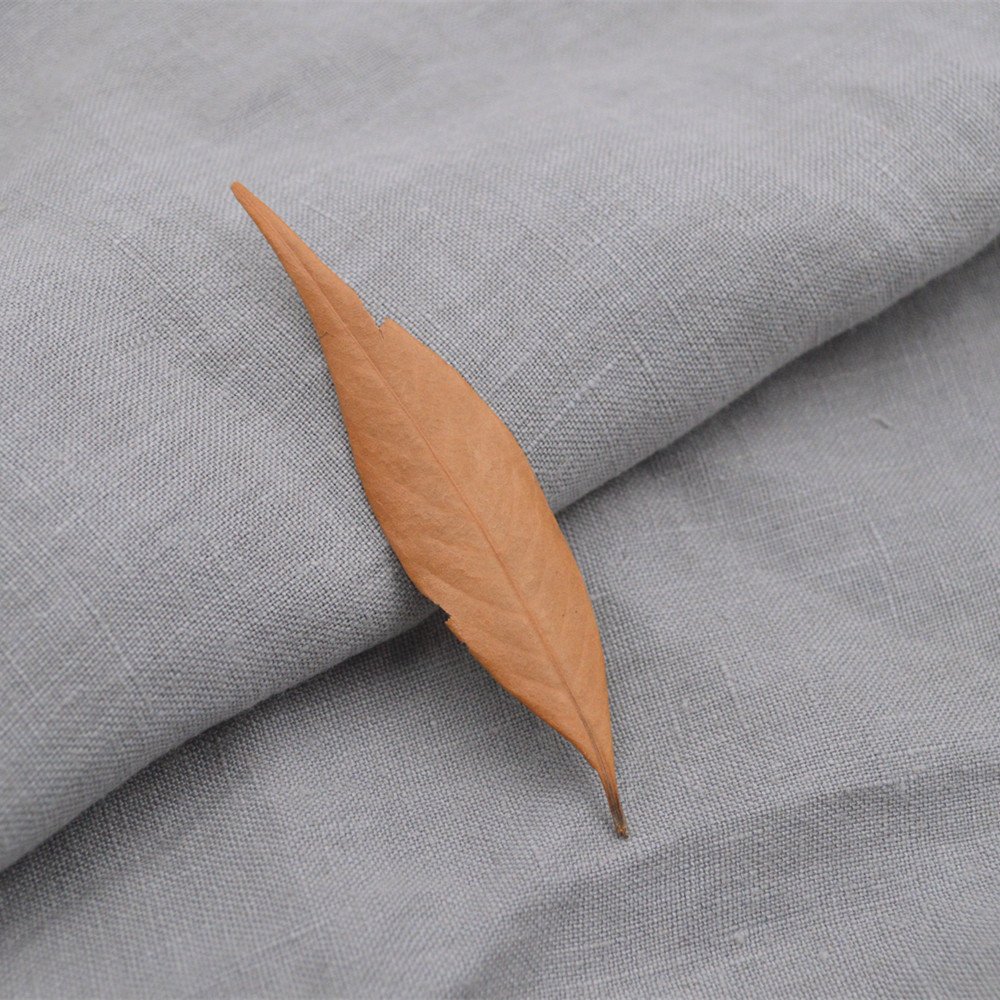
Custom linen shirts provide a blend of functional and aesthetic benefits that few other fabrics can match. Linen’s natural fibers breathe up to 20% more efficiently than cotton, keeping wearers cool and comfortable, while its texture enhances ink adhesion for prints that pop and endure. This combination delivers garments that feel luxurious, wear well over repeated launderings, and elevate a brand’s image through unmistakable quality.
Key Brand-Level Benefits of Custom Linen Shirts
Superior Comfort & Breathability
- Moisture Wicking: Linen absorbs up to 20% of its weight in moisture without feeling damp and releases it quickly.
- Thermoregulation: Open weave allows air circulation, ideal for tropical and summer collections.
Premium Look & Feel
- Natural Texture: Subtle slubs create depth, giving prints a handcrafted aesthetic.
- Softness Over Time: Linen softens with each wash, improving customer satisfaction and lifetime value.
Enhanced Print Quality
- Ink Absorption: Linen’s capillary structure holds pigment-based inks more evenly, reducing bleeding.
- Colorfastness: Prints maintain >90% vibrancy after 50 industrial washes when using reactive or discharge inks.
Sustainability & Brand Story
- Eco-Credentials: Linen is biodegradable, requires 20–30% less water than cotton, and often grown with minimal pesticides.
- Narrative Power: Rich heritage—from ancient Egypt to modern French ateliers—adds storytelling value for marketing.
Custom Linen Shirt Advantages Overview
| Benefit Category | Key Metric / Feature | Impact on Brand |
|---|---|---|
| Breathability | 20% higher moisture wicking vs. cotton | Customer comfort; seasonal relevance |
| Print Quality | ≥90% print vibrancy post-50 washes | Longer-lasting designs; premium feel |
| Fabric Softness | Softens \~15% each wash cycle | Improved customer loyalty |
| Sustainability | ↓30% water vs. cotton cultivation | Eco-branding; regulatory compliance |
Critical Perspectives
- Print vs. Hand Feel Trade-Off High-coverage prints can stiffen lightweight linen; consider strategic placement or discharge techniques to preserve drape.
- Cost vs. Volume Premium linen runs carry higher per-yard costs—balance capsule sizes and MOQs to maximize ROI without overstocking.
- Care Instructions Linen prints may require gentle wash cycles to retain crispness; clear labeling enhances after-sales experience.
- Market Positioning Custom-printed linen commands a higher price point; ensure brand messaging and distribution channels support premium pricing.
Which Printing Methods—Screen, Digital, or Heat Transfer—Are Best Suited for Linen Fabric?
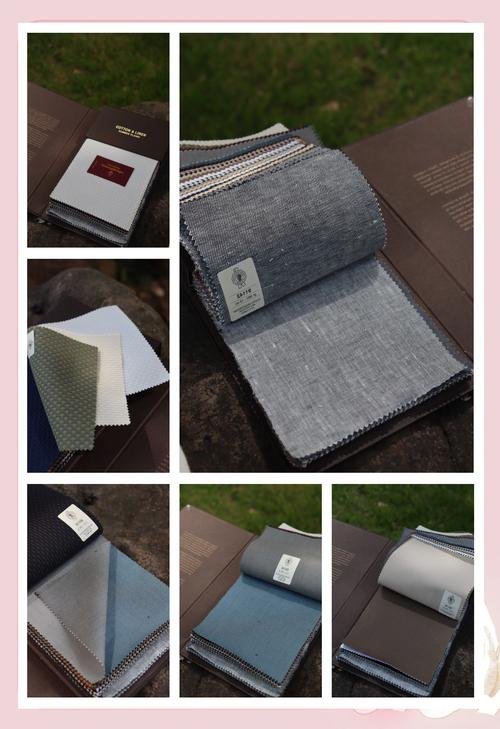
When it comes to printing on linen, each method has unique strengths: screen printing yields bold, vibrant colors with outstanding wash‐fastness; digital (DTG) printing excels at intricate, multi-color designs with minimal setup; and heat transfer offers fast turnaround for small runs and complex graphics. For linen—a fabric with natural slubs and variable absorbency—screen printing using pigment or reactive inks often provides the most uniform coverage and durability, while digital printing with pre-treatment and heat transfer with high-quality vinyl expand creative possibilities for bespoke collections.
Evaluating Printing Techniques for Linen
Screen Printing
- Advantages
- Color Vibrancy: Pigment/reactive inks sit atop fibers for strong contrast.
- Durability: Passes 50–100 wash cycles with <5% color loss.
- Limitations
- Setup Cost: \$15–\$30 per screen; economical above 200 pieces per color.
- Design Complexity: Best for 1–6 spot colors, not photorealistic motifs.
B. Direct-to-Garment (DTG) Digital Printing
- Advantages
- Detail & Gradient: Ideal for photographic prints and unlimited colors.
- Quick Samples: No screens needed; perfect for prototypes or low MOQs (50–100 pieces).
- Limitations
- Washfastness: Typically withstands 30–50 washes before \~10% fading.
- Fabric Prep: Requires specialized pre-treatment to ensure ink adhesion on linen’s irregular surface.
Heat Transfer & Vinyl
- Advantages
- Turnaround Speed: Transfers cut or printed in minutes; no drying time.
- Special Effects: Foil, glitter, flock for premium accents.
- Limitations
- Hand Feel: Transfers add a slight stiffness or “plastic” layer.
- Durability: 20–30 wash cycles before peeling or cracking; best for limited-wear fashion pieces.
Printing Method Comparison for Linen Shirts
| Printing Method | Setup Cost | Color Capability | Wash Durability | Ideal Run Size | Specialty Effects |
|---|---|---|---|---|---|
| Screen Printing | \$15–\$30/screen | 1–6 spot colors | ≥50 washes (<5% fade) | 200+ garments | Pantone match, metallic |
| DTG Digital | Low (printer) | Unlimited, gradients | 30–50 washes (\~10% fade) | 50–200 garments | Photorealism, soft hand |
| Heat Transfer/Vinyl | \$0 | Unlimited (transfer) | 20–30 washes (peel risk) | 10–100 garments | Foil, glitter, flock |
Critical Perspectives
- Economies of Scale Screen printing becomes cost-effective for large runs, while DTG suits small-batch customization.
- Design vs. Durability Prioritize screen or DTG for long-lasting core styles; reserve heat transfers for limited-edition or high-impact accents.
- Fabric Interaction Linen’s natural texture can cause “white spots” in DTG printing—test pre-treatment protocols or lean into the rustic look.
- Sustainability Considerations Water-based pigment inks for screen printing and eco-solvent transfers minimize chemical runoff—key for eco-conscious brands.
How Do OEM and ODM Services Differ When Producing Custom Linen Shirts?
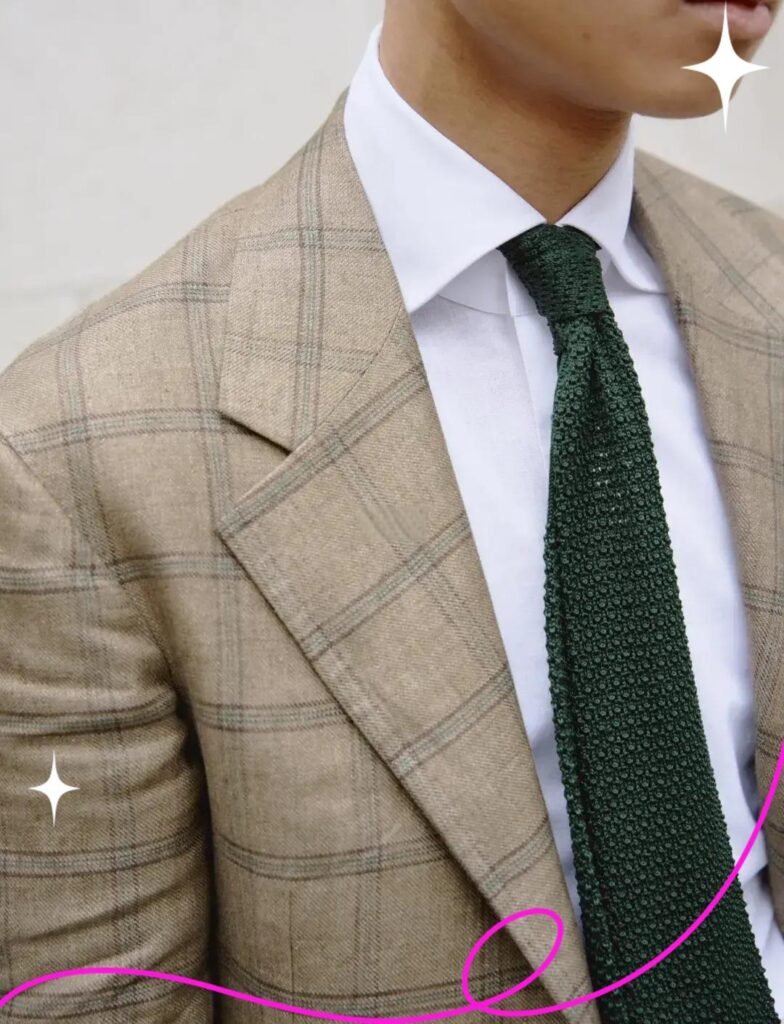
Choosing between OEM (Original Equipment Manufacturer) and ODM (Original Design Manufacturer) impacts control, cost, and creativity. OEM services let brands supply their own designs, patterns, and specifications—ensuring absolute creative control—while ODM services provide turn-key solutions, leveraging a manufacturer’s in-house designs and technical expertise to fast-track production. OEM suits established labels with clear brand identities and proprietary prints; ODM benefits startups or seasonal lines seeking concept-to-sample speed without investing in design infrastructure.
OEM vs. ODM—Weighing the Pros and Cons
Design Ownership
- OEM:
- Control: 100% ownership of artwork, pattern grading, fit.
- IP Protection: Clear legal separation, minimal risk of design leakage.
- ODM:
- Speed to Market: Choose existing templates or adapt in-house artwork.
- Cost Efficiency: Shared development costs across multiple clients.
Development Timeline
- OEM
- Turn-Key Timeline: 6–8 weeks from tech pack to final sample.
- Revisions: Each design change adds 1–2 weeks.
- ODM
- Accelerated Timeline: 4–6 weeks leveraging pre-qualified styles and print placements.
- Limited Iterations: Fewer custom tweaks allowed; best for tested silhouettes.
Minimum Order Quantities (MOQs)
- OEM
- Higher MOQs: Typically 500–1,000 pieces per style/color due to bespoke tooling.
- ODM
- Lower MOQs: Often 200–500 pieces by aggregating demand across clients.
Cost Structure
- OEM
- Upfront Development Fees: \$1,000–\$3,000 per style for tech packs, pattern making, and sampling.
- Unit Price: \$8–\$15 per shirt for 100% linen prints (depending on volume).
- ODM
- Design Fee: Typically included in unit cost or as a modest one-time charge (\$200–\$500).
- Unit Price: \$7–\$12 per shirt via shared development overhead.
OEM vs. ODM Service Comparison
| Service Type | Design Control | Lead Time | MOQ | Upfront Fees | Unit Cost Range (USD) |
|---|---|---|---|---|---|
| OEM | Full custom input | 6–8 weeks | 500–1,000 pcs | \$1,000–\$3,000/style | \$8–\$15 |
| ODM | Template-based | 4–6 weeks | 200–500 pcs | \$200–\$500 one-time | \$7–\$12 |
Critical Perspectives
- Brand Identity vs. Speed Established brands may accept longer OEM timelines for unique offerings, while emerging labels leverage ODM’s agility.
- Investment Trade-Offs OEM’s higher upfront costs can be amortized across large runs; ODM reduces risk for testing new prints and small drops.
- Quality Consistency Both models rely on the manufacturer’s QC—validate via sample approvals and supplier audits regardless of service type.
- Scalability OEM partnerships scale smoothly for annual collections; ODM programs excel at rapid micro-collection rollouts and limited editions.
What Design Files and Specifications Do You Need to Provide for Linen Shirt Printing?

Providing precise design inputs is crucial to achieving accurate, high-quality prints on linen. You’ll need to supply vector-based artwork files (AI, EPS, or PDF) at a minimum of 300 DPI for rasters, along with a detailed tech pack that includes shirt dimensions, seam allowances, print placement guides, color Pantone references, fabric weight, and knit or weave details. Clear specs eliminate guesswork, reduce sampling rounds, and ensure your custom prints align perfectly with the intended aesthetic and fit.
Assembling a Comprehensive Design Package
Vector Artwork & Color Specifications
- File Formats: AI, EPS, PDF for spot colors; high-res TIFF/PNG (300 DPI+) for full-color designs.
- Color References: Pantone® or custom ink recipes; specify pigment vs. reactive ink preferences.
- Layers & Trapping: Clearly separate print layers, outline crop marks, and allow 1–2 mm trapping for registration.
Tech Pack Essentials
- Garment Specs: Size range (S–XXL), body measurements, tolerance allowances (±0.5 cm).
- Print Placement: Front/back coordinates (in cm or inches from neckline/hem), repeat patterns, scale percentages.
- Stitching & Construction: Seams (double-needle vs. overlock), thread color, label positioning.
Fabric and Finish Details
- Linen Grade: Specify fiber source (e.g., 100% European flax, 230–280 gsm plain weave).
- Pre-Treatment: Indicate if pre-washing or mercerizing is required to minimize post-print shrinkage.
- Finish Requirements: Softener, DWR, or other functional finishes that might affect print absorption.
Sample Approval Process
- Digital Mockups: 3D renderings or flat sketches showing print alignment on shirt panels.
- Physical Samples: Lab-dips for color proofing, strike-off prints on linen swatches, and proto shirts for fit and print clarity.
Design Package Components
| Component | Details to Provide | Purpose |
|---|---|---|
| Artwork Files | AI/EPS/PDF (vector), 300 DPI rasters, Pantone codes | Accurate color reproduction |
| Tech Pack | Size specs, seam allowances, print coords, stitch details | Ensures proper fit and placement |
| Fabric Specs | Linen origin, weight, weave, pre-treatments | Controls print behavior and shrink |
| Finish Requirements | Softener, DWR, labeling | Anticipates impact on ink uptake |
| Sample Approvals | Digital mockups, lab-dips, physical strike-offs | Validates color, scale, and fit |
Critical Perspectives
- Vector vs. Raster While DTG can use high-res rasters, screen printers need crisp vectors—always start with vector art to maximize flexibility.
- Shrinkage Compensation Linen can shrink 3–5% on first wash—factor this into your tech pack dimensions or request pre-shrunk fabric.
- Finish Conflicts Functional finishes (DWR, softeners) may repel certain inks—communicate finish timing (pre- or post-print) to your supplier.
- Iterative Sampling Allocate budget and time for at least two rounds of physical sampling to catch alignment and color issues before full production.
How Does Linen Quality—Fiber Grade and Weave—Impact Print Clarity and Durability?
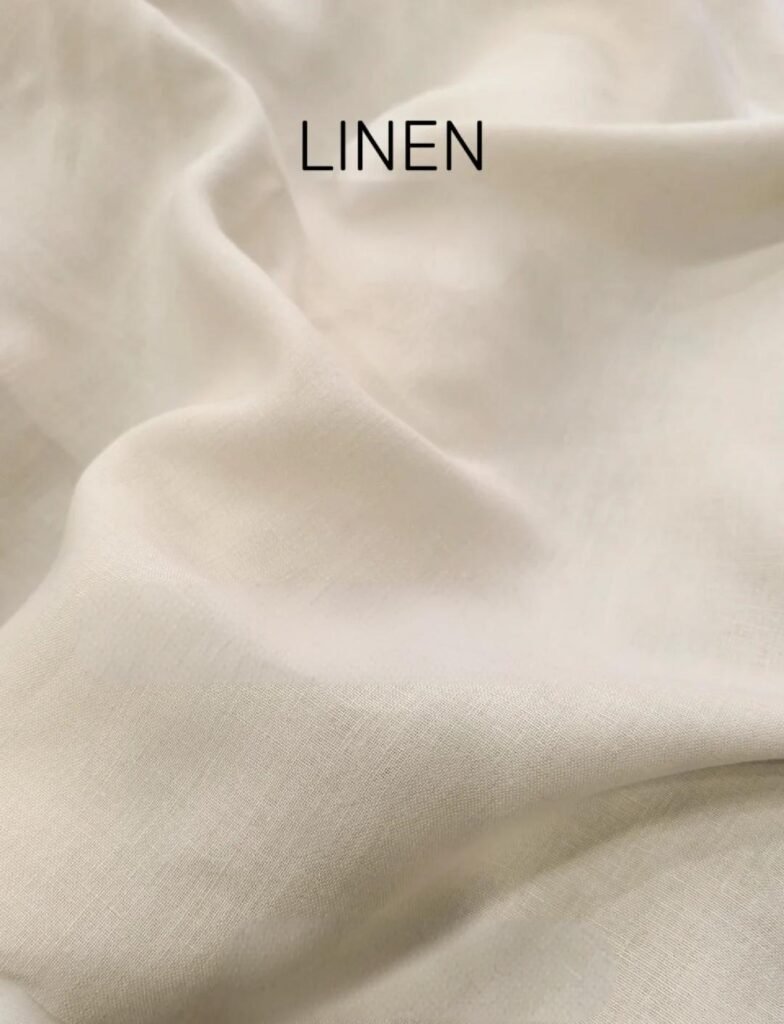
Linen’s unique characteristics—fiber length, thread count, and weave tightness—directly affect how crisp and durable your prints appear. Higher-grade linen made from longer flax fibers (staple length 32–36 mm) spun into fine yarns (Ne 30–40) and woven at tighter thread densities (12 epi × 10 ppi) yields a smoother surface for sharper prints and greater wash longevity. Conversely, coarser weaves (8 epi × 8 ppi) on Ne 20 yarns create textured “slub” effects that give prints a rustic appeal but can sacrifice edge definition and ink work penetration.
Dive Deeper: Correlating Linen Attributes with Print Outcomes
Fiber Grade (Staple Length & Micronaire)
- Long-Staple Linen (32–36 mm):
- Characteristics: Fewer fiber ends per yarn, smoother hand.
- Print Benefit: Reduced pilling and fuzz, leading to consistent ink application.
- Shorter-Staple Linen (24–28 mm):
- Characteristics: More slubs, increased fabric character.
- Print Drawback: Ink pooling in low-slit areas; less uniform print density.
Yarn Count (Ne System)
Fine Yarn (Ne 30–40):
- Weave Interaction: Enables higher thread counts (12 epi × 10 ppi).
- Print Quality: Sharp lines, fine detail reproduction down to 1 mm.
- Coarse Yarn (Ne 20–25):
- Weave Interaction: Typical densities (8 epi × 8 ppi) for a slubby look.
- Print Quality: Better for blocky or distressed designs; not for text or small motifs.
Thread Density (Ends & Picks per Inch)
- High Density (12 epi × 10 ppi):
- Surface: Smooth canvas-like texture.
- Durability: Withstands >50 wash cycles with minimal print degradation.
- Low Density (8 epi × 8 ppi):
- Surface: Pronounced slubs; softer drape.
- Durability: Print can crack or fade after 30+ washes if high-coverage inks used.
Fabric Weight (gsm)
- Medium Weight (230–280 gsm):
- Balance: Offers good drape and print stability.
- Use Case: Most custom linen shirts.
- Lightweight (<200 gsm):
- Challenge: Can wrinkle and stretch, affecting print registration.
- Heavyweight (>300 gsm):
- Benefit: Stable print base but reduces breathability in warm climates.
Linen Quality vs. Print Performance
| Attribute | High-Grade Linen | Standard Linen | Impact on Printing |
|---|---|---|---|
| Staple Length | 32–36 mm | 24–28 mm | Longer staples yield smoother prints |
| Yarn Count | Ne 30–40 | Ne 20–25 | Finer yarns allow finer details |
| Thread Density | 12 epi × 10 ppi | 8 epi × 8 ppi | Higher density → sharper prints |
| Weight | 230–280 gsm | 180–220 gsm | Medium weight optimizes drape & print |
| Wash Durability | ≥50 cycles w/o print lift | \~30 cycles | High-quality linen holds inks better |
Critical Perspectives
- Aesthetic vs. Precision Rustic “slub” linen supports a handcrafted look, but brands requiring crisp logos or text should prioritize high-grade, tight-weave linen.
- Cost Implications Finer yarns and higher densities add 15–25% to fabric cost—reserve for flagship styles where print fidelity is a priority.
- User Experience High- density linen can feel stiffer; offer pre-washed or enzyme-softened options to improve wearability.
- Supply Consistency Linen quality can vary by growing region and harvest season—lock in contracts with mills to secure consistent batches for large runs.
What Is the Typical Production Workflow and Lead Time for OEM/ODM Linen Shirt Orders?
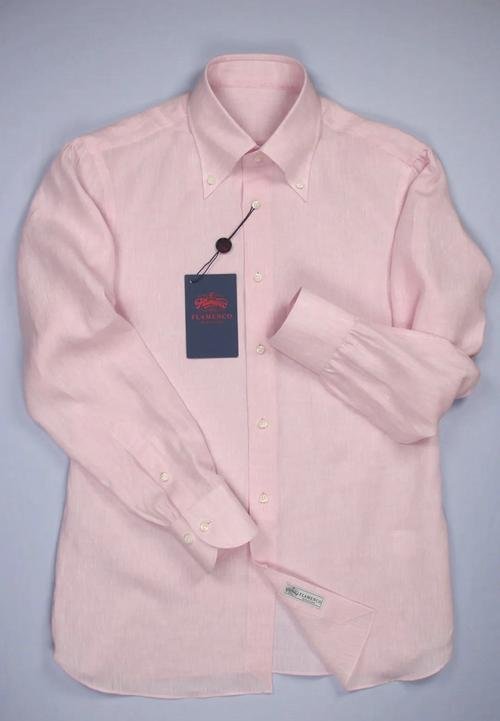
From initial concept to finished garment, understanding the production journey helps brands manage timelines and budgets. A standard OEM/ODM workflow spans 6–12 weeks and follows these phases: design and tech-pack finalization (1–2 weeks), material sourcing and sampling (2–3 weeks), printing & prototyping (1–2 weeks), bulk production (2–4 weeks), and quality control & shipping prep (1–2 weeks). Clear communication and early approvals at each stage keep projects on track and minimize costly delays.
Stages, Timeframes & Best Practices
A. Design & Tech-Pack Finalization (1–2 weeks)
- Activities: Finalize artwork, print placement guides, size specs, and fabric trims.
- Tips: Consolidate feedback in one round; use standardized templates to speed approvals.
B. Material Sourcing & Sampling (2–3 weeks)
- Activities: Select linen batches, weave density, and finishes; produce lab-dip and hand-sample.
- Tips: Approve fabric swatches and test print strike-offs simultaneously to shorten cycles.
C. Printing & Prototype Review (1–2 weeks)
- Activities: Create digital mockups, run strike-offs at scale, construct proto shirts for fit and print checks.
- Tips: Schedule in-mill visits or real-time video reviews to avoid shipping delays.
D. Bulk Production (2–4 weeks)
- Activities: Screen or digital print full order, cut & sew shirts, apply final finishes, and conduct inline inspections.
- Tips: Lock in color recipes and print parameters; stagger print and sewing schedules for efficiency.
E. Quality Control & Shipping Preparation (1–2 weeks)
- Activities: Final QC checks (print alignment, garment measurements), packing, labeling, and documentation for export.
- Tips: Use AQL sampling (2.5% defect rate max) and ensure customs paperwork is ready to avoid port holdups.
OEM/ODM Production Timeline
| Phase | Duration | Key Deliverables |
|---|---|---|
| Design & Tech-Pack | 1–2 weeks | Finalized tech-pack, artwork files |
| Material Sourcing & Sampling | 2–3 weeks | Fabric swatches, lab-dips, hand-samples |
| Printing & Prototype Review | 1–2 weeks | Strike-offs, proto shirts |
| Bulk Production | 2–4 weeks | Printed fabric, cut & sewn shirts |
| QC & Shipping Prep | 1–2 weeks | AQL reports, packed cartons, docs |
Critical Perspectives
- Buffer Time Build a 10–15% time buffer into each phase to account for sample revisions or material lead-time shifts.
- Parallel Processing Overlap sourcing and design approvals when possible—e.g., review tech packs while swatches are in transit.
- Communication Cadence Weekly progress calls and shared dashboards help catch issues early and keep stakeholders aligned.
- Contingency Planning Identify backup mills or local print partners for critical phases to mitigate international shipping or capacity bottlenecks.
How Are Minimum Order Quantities (MOQs), Pricing, and Payment Terms Structured in OEM/ODM Services?
Understanding MOQs, pricing tiers, and payment structures upfront prevents budget surprises. OEM services typically require higher MOQs—500–1,000 pieces per design—because bespoke tooling and screen setups drive costs, while ODM offerings can drop MOQs to 200–500 by leveraging shared designs. Unit pricing for custom-printed linen shirts ranges from \$8 to \$15 per piece, depending on order size, print complexity, and fabric weight. Standard payment terms are 30% deposit to begin production, 70% balance upon shipping, with discounts of 2–5% for higher-volume commitments or early full payment.
Negotiating MOQs, Pricing, and Terms
A. Minimum Order Quantities (MOQs)
- OEM MOQs:
- 500–1,000 pcs per color/design to justify custom screen and sampling costs.
- Surcharge: Small runs (<500) incur +10–20% on unit price.
- ODM MOQs:
- 200–500 pcs per style by pooling multiple clients’ demand.
- Flexibility: Can mix sizes within the same design to hit MOQ.
B. Unit Pricing Factors
- Order Volume Tiers:
- 200–499 pcs: \$12–\$15 per shirt.
- 500–999 pcs: \$10–\$12 per shirt.
- 1,000+ pcs: \$8–\$10 per shirt.
- Print Complexity:
- Single-color spot: baseline pricing.
- Full-area, multi-color: +\$2–\$4 per shirt for extra screens or DTG time.
- Fabric Weight Impact:
- 200–230 gsm: standard cost.
- >280 gsm: +\$1–\$2 per shirt for heavier linen.
C. Payment Terms and Discounts
- Standard: 30% deposit, 70% before shipment (T/T).
- Discounts:
- 2% for 50% early payment.
- 3–5% for orders ≥1,000 pcs or multi-year agreements.
- Escrow/Letter of Credit: Available for high-value deals, adding security at 1–2% bank fees.
MOQ & Pricing Structure
| Order Size | MOQ Requirement | Unit Price Range (USD) | Print Complexity Surcharge | Early Payment Discount |
|---|---|---|---|---|
| 200–499 pcs | ODM: 200 pcs | \$12–\$15 | +\$2–\$4 | 2% (50% up front) |
| 500–999 pcs | OEM: 500 pcs | \$10–\$12 | +\$1.5–\$3 | 2%–3% |
| 1,000+ pcs | OEM: 1,000 pcs | \$8–\$10 | +\$1–\$2 | 3%–5% |
Critical Perspectives
- Balancing MOQ with Inventory Risk Higher orders unlock better pricing but tie up working capital—use sales forecasts and pre-orders to justify volumes.
- Print Complexity vs. Cost Simplify designs where possible—spot colors can deliver brand impact at a fraction of full-print expense.
- Leveraging Payment Terms Early payment discounts effectively reduce unit cost—assess cash flow to capitalize on these incentives.
- Negotiation Levers Multi-style, multi-color orders can negotiate blended pricing—don’t treat each design in isolation.
What Quality Control and Compliance Checks Ensure Consistent, High-Quality Printed Linen Shirts?
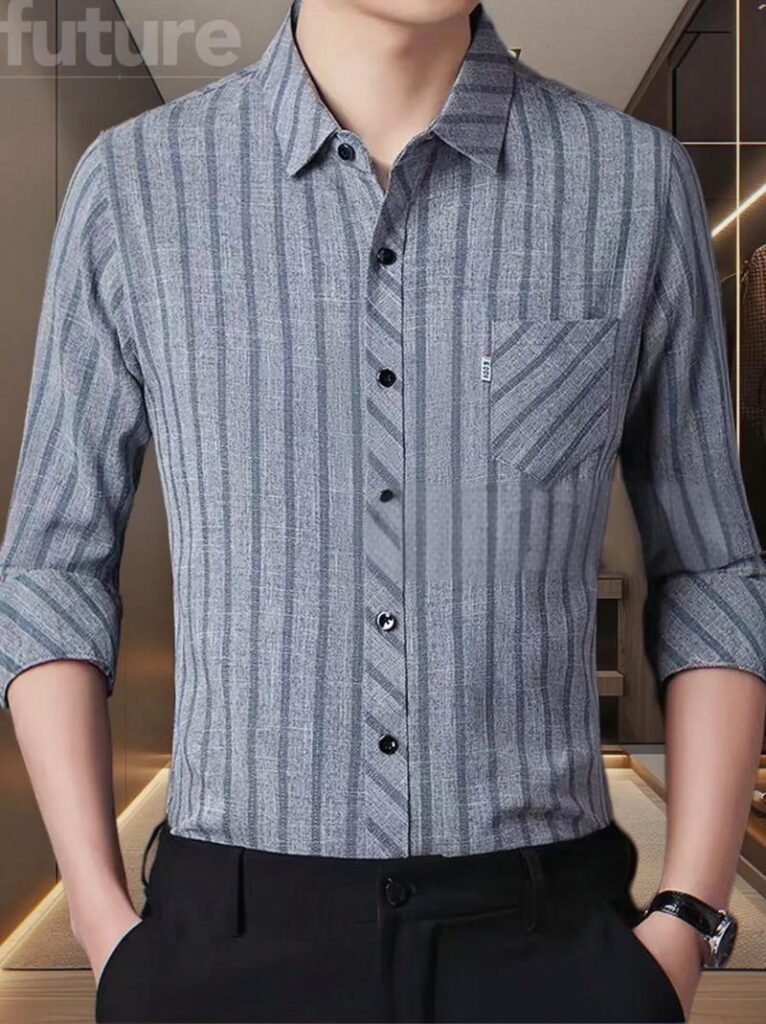
Guaranteeing excellence in custom linen shirts requires rigorous quality control (QC) and adherence to compliance standards at every production step. Implementing incoming material inspections, in-line print checks, final garment audits, and chemical safety tests—aligned with ISO 2859 AQL sampling and Oeko-Tex® Standard 100 requirements—ensures your shirts arrive defect-free, safe for skin contact, and true to your design specifications.
Multi-Stage QC and Compliance Protocols
A. Incoming Material Inspection
- Fabric Roll Verification: Check gsm, weave density, color shade against approved lab-dip.
- Acceptable Quality Limit (AQL): Use ISO 2859 Level II for fabric—max 2.5% major defects (e.g., holes, slubs).
B. In-Line Print Monitoring
- First-Piece Approval: Approve the very first printed shirt for color accuracy (ΔE ≤ 1.5) and registration.
- Batch Sampling: Every 100 pieces, inspect 5 shirts for print consistency, bleed, and adhesion per AATCC 127 (wet crocking) and AATCC 61 (laundering).
C. Final Garment Audit
- Construction Check: Seam allowance (±0.3 cm), stitch density (10–12 SPI), collar and cuff alignment.
- Visual Inspection: No stray threads, print misalignment, or dye marks; AQL 2.5 for major defects, 4.0 for minor.
D. Chemical & Safety Compliance
- Oeko-Tex® Standard 100: Test finished shirts for restricted substances (formaldehyde, heavy metals, pesticides).
- Care Label Legibility: Ensure wash instructions (e.g., gentle cycle, 30°C) and fiber content are clearly printed on labels.
E. Pre-Shipment Testing
- Wash Test: 5-wash cycle on random samples—no >5% color loss or >2% dimensional change.
- Fit-Check: Confirm size specifications on 5% of garments across all sizes; tolerance ±0.5 cm in key dimensions.
QC Sampling and Testing Matrix
| QC Stage | Sample Size/Frequency | Test Standard | Acceptance Criteria |
|---|---|---|---|
| Fabric Inspection | 2 rolls per batch | ISO 2859 AQL Level II | ≤2.5% major defects |
| First-Piece Print Check | 1 unit | ΔE colorimeter | ΔE ≤1.5 |
| In-Line Batch Sampling | 5 shirts per 100 | AATCC 127 & AATCC 61 | No >5% color bleed; print intact |
| Final Garment Audit | 2.5% of total | ISO 2859 AQL | ≤2.5% major, ≤4.0% minor defects |
| Chemical Safety | 5 samples | Oeko-Tex® 100 | No restricted substances |
| Pre-Shipment Wash Test | 5 samples | AATCC 61 (laundering) | ≤5% color loss; ≤2% shrinkage |
Critical Perspectives
- Balancing Rigor and Speed Extensive QC ensures quality but can extend lead times—prioritize high-risk areas (print adhesion, fabric shade) for tighter sampling.
- Supplier Collaboration Share QC data and non-conformance trends with your manufacturer—joint corrective actions reduce future defects.
- Technology Integration Digital color matching and inline cameras can catch misprints early, minimizing wasted yardage.
- Continuous Improvement Maintain a scorecard tracking defect rates, turnaround times, and audit findings—use it to negotiate process improvements and volume discounts.
Ready to elevate your collection with impeccably printed linen shirts?
Custom-printed linen shirts offer unparalleled comfort, sustainability, and brand distinction—provided you partner with an OEM/ODM that rigorously manages design, production, and quality. Szoneier Fabrics delivers end-to-end linen printing solutions: from tech-pack consultation and sample optimization to robust QC and on-time delivery with low MOQs.
Contact Szoneier Fabrics today for free design consultations, fabric swatches, and personalized quotes. Let’s bring your vision to life—one luxurious linen shirt at a time.

